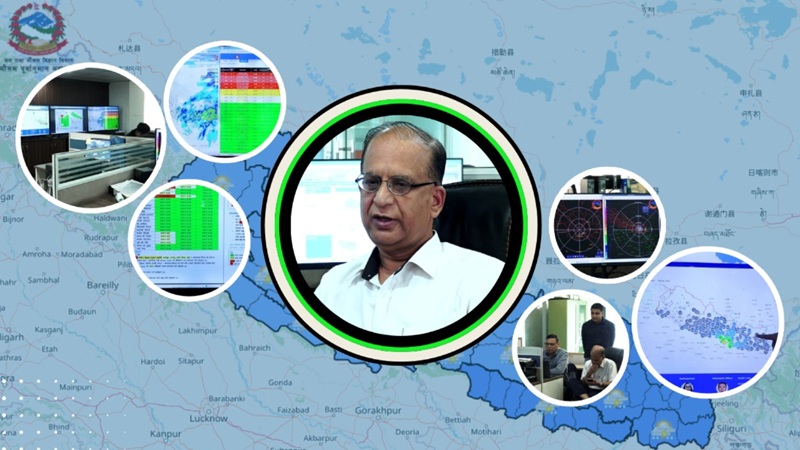Improved Weather Forecasting in Nepal: Technology Makes Predictions More Reliable
6th October 2025, Kathmandu
Weather forecasting in Nepal has significantly improved over the years. Previously, forecasts were often criticized, and public trust was low. Today, thanks to technological advancements, predictions have become more accurate, earning confidence from both citizens and organizations.
Improved Weather Forecasting in Nepal
According to Suman Kumar Regmi, Deputy Director General of the Department of Hydrology and Meteorology (DHM), modern weather forecasting in Nepal is now scientific, analytical, and technology-driven. He explained that forecasts are no longer based solely on estimates but on comprehensive data analysis from multiple sources.
“Weather forecasting is not based on guesswork anymore,” said Regmi. “We now receive 24/7 real-time data from meteorological centers, satellite images, and radar systems, all of which are analyzed to produce accurate predictions.”
Advanced Mathematical Models for Accurate Forecasts
Nepal has adopted globally recognized mathematical weather forecasting models. These models process data from multiple sources—including atmospheric measurements from inside and outside the country—to generate accurate city- and region-specific forecasts.
“Our software models analyze data collected from both Nepal and international sources to provide precise forecasts,” Regmi noted.
Radar and Satellite Technology in Nepal
Nepal currently operates three radar systems in Udayapur, Palpa, and Surkhet, with Udayapur and Palpa fully functional. The department also analyzes satellite imagery from China and Japan to monitor cloud movement and atmospheric conditions.
“We rely on satellite images from China and Japan, along with radar data, to improve forecast accuracy,” said Regmi. He added that key centers such as the DHM headquarters in Babarmahal and the control tower at Tribhuvan International Airport play a critical role in analyzing this data.
Currently, weather forecasts in Nepal are reported to be 80–85% accurate, thanks to these technological enhancements.
Artificial Intelligence and Future Prospects
The DHM is preparing to integrate Artificial Intelligence (AI) into forecasting systems. “We are studying and exploring AI applications in weather prediction, similar to global practices,” Regmi said.
As technology evolves, incorporating AI and other advanced tools will help Nepal achieve even more reliable and effective weather forecasts.
Challenges: Skilled Workforce Needed
Despite technological advancements, the availability of trained personnel remains a challenge. “Technology alone is insufficient; skilled human resources are essential to operate these systems effectively,” Regmi explained.
Impact of Climate Change on Weather Patterns
Over the past 20–25 years, Nepal has experienced significant changes in weather patterns, largely influenced by climate change. These changes affect rainfall cycles, agriculture, and other sectors, highlighting the need for accurate and timely forecasts.
Public Participation and Positive Feedback
Public and organizational interest in accurate weather forecasting has grown, with positive feedback being reported. Continuous improvements in technology and human resources remain critical to sustain reliability.
Conclusion
Nepal’s weather forecasting system has made remarkable progress through scientific methods, advanced technology, and international cooperation. Strengthening the system with new technology, skilled personnel, and AI integration is essential to meet the challenges posed by climate change and ensure accurate, timely weather predictions.
For more: Improved Weather Forecasting in Nepal






